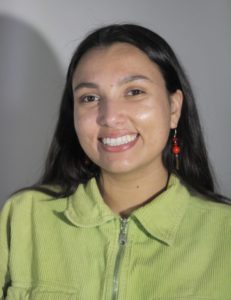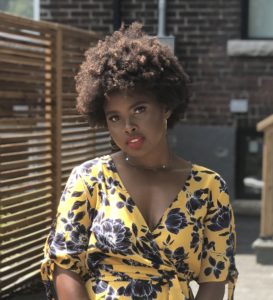Curationist in Conversation: VALENTINA CABEZAS & AMBER VANTERPOOL
Meet two more contributors who help make Curationist a reality:


What brought you to Curationist? What is your engagement with it?
Valentina Cabezas – I was brought on by another current member, Kimi Hanauer. We actually collaborate outside of Curationist, but being that she was already a part of it, she thought I’d be a good fit. I began communicating with Virginia Poundstone, Curationist Content Curation Director, and at first, I wasn’t really entirely sure what Curationist would become; I just knew that it was going to help organize and bring art and cultural content from the public domain and Creative Commons into a more centralized location that would then be curated to build upon existing works in order to cultivate more knowledge and culture. For me, what really made me want to be a part of it was knowing that this project was most likely going to be 90 percent collaborative. I love doing collaborative work and that was really transparent with how we were approaching the Curationist concept. It gave me comfort knowing that the larger goal of wanting to cultivate community would allow for other voices to be heard as well.
Amber Vanterpool – I was brought on by Virginia, the Content Curation Director, who is a family friend of my mom. She knew that I had experience working with multimedia exhibits. I was a co-producer on a project called Re:Construcción, which explored the current effects, or the outcome, of the Salvadoran Civil War. It was a touring exhibit, and it was my first time curating a project of that scale. I had that base of knowledge, so Virginia asked if I would be interested in contributing to Curationist as a digital archivist; I’ve been on board for a few months now.
Would you say there’s a difference between “just Googling” something to find an answer and truly understanding a topic?
AV – Absolutely. I feel like today we have easy access to so much information that I find just Googling something gives me an answer very quickly, but I forget almost immediately what that answer was. When you’re doing deep, thorough research, and actually doing the work to find the answers, that experience of having to look deeper and try to understand is much more remembered.
VC – Amber is right. It’s interesting because “just Googling” is so surface. It’s the difference between getting that immediate answer and what is going to reel me in, to want to dig deeper and find more of a narrative or more nuances. Sometimes it’s exhausting to continue looking through all of this information and when you see someone make a search more personable, for example, when you find a good article or something with that personal touch to it, I become more engaged and I’m able to want to dive in and learn more about a certain topic.
When was a time when someone’s introduction to a subject or unique perspective made you more interested in it?
AV – This happened to me a couple weeks ago; I went out to Montauk New York, and there are signs everywhere about, “If you see a horseshoe crab report immediately to the Environmental Protection Agency…” And I was like, “What’s with these horseshoe crabs, why do people want to know if these horseshoe crabs are dragged here? That’s super weird.” I learned though, in the medicine field, they extract horseshoe crab blood to test medicines and see how it reacts to blood because horseshoe crab blood clots way faster than human blood, because they don’t have blood vessels. So, their body’s natural response is to clot very quickly because if they get injured, they’re going to bleed out because they don’t have veins. I was like, “Whoa, this is crazy! Horseshoe crabs are amazing!” I went into this deep hole; I was Googling, but I was being more thorough with my Googling, just reading all these articles about it.
VC – The first thing that comes to mind is I have a friend that recently found out that they have lineage in Spain, the Sephardic Jews. I said, “Tell me more!” I’m always interested when people have a rediscovery of their ancestry and are getting a better idea of where their people come from, being that I’ve come to realize that I am mixed up. Whenever anyone has that experience, I’m like, “Oh, wait, tell me more about what you’re feeling.” I want to know because I also tend to have moments where I’m like, “Oh shoot, I didn’t realize that I came from here.” That’s when I get reeled in, when that passion of wanting to have a better understanding of who came before you, and who made you, in a sense of what you are today.
The Internet is a global phenomenon, and yet much of the content is from a Global North (aka Global Minority) perspective. Why do you think it’s important to include different perspectives?
AV – I think there are so many different people, things, and stuff to know in the world, but it’s just an insult to humanity to have one homogenous representation of anything. I think we’ve done a great job, or we’re making great strides, in our society to be more inclusive. Even just growing up, I never saw myself represented in media at all. It makes you feel, in many ways, alone in the world and not knowing where your place is if you don’t see these examples of people who look like you, or whose family are like yours, or whose stories are similar to yours. I think we do ourselves a disservice to embrace one thing that someone told us is most important or more valuable than the next. There’s such a rich culture out there; why would we not want to make our own lives richer and make the world exciting? We have access to all this stuff, so why not use it?
VC – Yeah, you know, I think being that one of the main goals of Curationist is to deepen a person’s understanding of so many different arts around the world and cultures, it’s important to include these perspectives from the global majority that are under represented. The whole point is to build community, and to be able to build community you have to build on sharing your experiences with each other and I think to have different perspectives. It just allows for us to be more empathetic with one another, and helps us continue pushing forward to be more inclusive and to be more understanding.
AV – And then with that, we also learn that we’re all not so different. Like, actually, everyone wants the same thing. And one way of learning that is by learning about them, and you see all these differences that society has placed on us are just a means of control, and we can very easily overcome and be better.
We have access to an almost incomprehensible number of cultural works. Do you think there’s still a value to providing context and commentary alongside this content?
AV – I definitely think that there is value, but more so it’s necessary to provide context. I think this goes back to the getting, or having, a deeper understanding of anything, like a picture without context is left for anyone to interpret. For example, I came across a political cartoon from the 1930s and it had all these different characters, so there was a wealthy white man, and what they depicted as a former slave-like ignorant person who didn’t know anything, and they also depicted a native person who had all these awful slurs and quotations. It was crazy to see. But also, that was America, and some places are still like that in America. When I look at that image, it makes me emotional because I am a descendant of slaves. So, for someone to see that picture, and me to know that’s what people perceive, or what anyone has ever said about who I am, I don’t want to see that just standing alone. I want to know where this came from, who drew this picture, what was the political climate? I want to know all the facts, so that it’s not left for anyone to just take it and do what they want with it. It ties back to the idea of content in the Global North and how we as a society decide to depict people. It erases the rich histories of people from all over the world with wonderful experiences and wonderful things to offer; it limits a perspective to that kind of thing.
What subject is next on your list to research and/or curate?
VC – Since we’re talking about ancestry to a certain degree, I have been wanting to focus on my Chilean ancestry. I’m fully Chilean and I was born there, but I am a migrant. I came here when I was very, very, young, so I didn’t really get to participate in a lot of the festivities and things from the country that I was born in. I want to focus on these folkloric dances that come from Chile. One specifically called la Cueca, which is a dance that has been used in so many different ways politically. I’m interested in documenting that history and how it’s been brought back to become a dance of the working class. I think it has Spanish indigenous and African roots, and it was something that all of the lower class would dance to. When the dictatorship came up, he took this dance and used it during his reign. The people then took the dance back as a form of protest; talking about the loss of their loved ones because this was a partner dance and there were a lot of Chilean citizens called los desaparecidos, which means disappeared, that were wiped off. No one knows what happened to them, no one knows where the remains could be. I’m curious to track that and have a conversation about this folkloric dance and its journey throughout Chilean history.
AV – It’ll be a really beautiful collection, I imagine. Similar to this ancestry train we’ve taken through this interview, I recently found a bunch of class photos from the founding years of Morehouse and Spelman. They are stunning photos of these educated black men and women in the 1800s, which is something we never get to see. They took my breath away. So, I’d love to compile images of that nature and really learn more about the founding of HBCUs in America and the lasting impact they’ve had on educating us in this country.
Curationist is one website with multiple views.